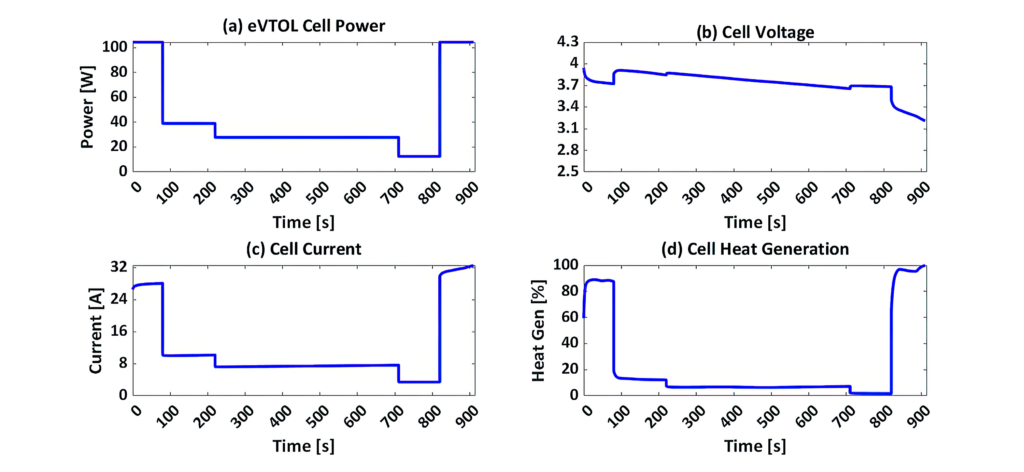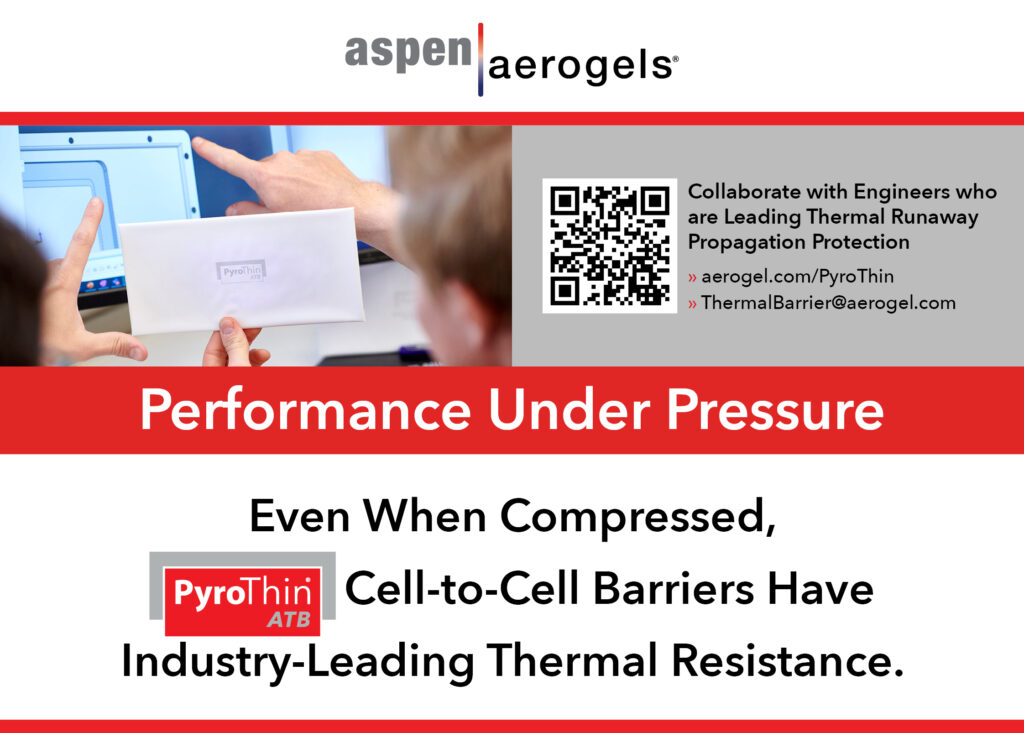Cell proves its worth for eVTOLs

About:Energy has characterised the P45B high-power battery cell from Molicel being used in several eVTOL designs (writes Nick Flaherty).
The P45B has a 10C pulse discharge capability and a 3C charge capability but can still provide a 242 Wh/kg nominal specific energy. Its low DC internal resistance is measured by About:Energy at 13.8 mΩ (7.86 mΩ for 0.2 seconds) bodes well for high C-rate use cases, particularly where the thermal management system is constrained.
About:Energy used its equivalent circuit models to simulate the energy density for the advertised 120 W maximum continuous discharge power, and simulated conditions in a climate chamber with forced-air convection (the conditions under which most companies test cells).
The simulation found that the cell became thermally limited before reaching the minimum voltage cut-off. By using models from About:Energy’s Voltt platform, battery designers can apply their own thermal boundary conditions to test the P45B’s performance.
The high-power performance has led to the Molicel cells to be designed into eVTOL taxis from Archer and Vertical Aerospace, where charging times and power availability for landing are critical components of the design.
The model parameterisation datasets were collected using a Peltier element temperature control system, which allows for control of the surface temperature to an absolute precision of ±0.5 ºC and a resolution of 0.01 ºC. Proprietary controllers rapidly heat or cool cells to ensure their surfaces remain at the predefined test temperature.
About:Energy also used its tools to visualise how the Moline P45B would behave in different use cases, such as when testing in a chamber during cell technology validation for battery design, or using bottom cooling during detailed design phases.
For a 4C continuous discharge with forced-air convection inside a climate chamber, the model found that the cell cap temperatures were almost 20 ºC higher for the bottom cooling case compared to the cell simulated under climate chamber conditions. In fact, in the bottom cooling case, the cell almost reached the manufacturer’s extended operating temperature limit of 80 ºC.
In the climate chamber case, the temperature gradient across the cell was around 6 ºC; in the bottom cooling case this increased to almost 15 ºC. It is critical that product-focused pack conditions are emulated early on in the product development process to account for this.
About:Energy then developed a custom eVTOL profile scaled to a typical 21700 cylindrical cell level and simulated it using the 2D electrical and thermal coupled equivalent circuit model for the P45B. This includes a spatially resolved thermal parameterisation of the cell.
This found that the temperature where it would normally be measured for the cell (the side surface of the cell, halfway from either end) was always below 60 ºC while the temperature of the cell cap was around 67 ºC. This is higher than the normal operating temperature limit of the cell.
While not a thermal runaway risk yet, it could lead to rapid cell degradation, leading to limited battery life.
The 2D thermal modelling capabilities allow battery designers to investigate axial and radial thermal gradients for diverse use cases to quantify the optimal use conditions for their cells.
Click here to read the latest issue of E-Mobility Engineering.

ONLINE PARTNERS





















